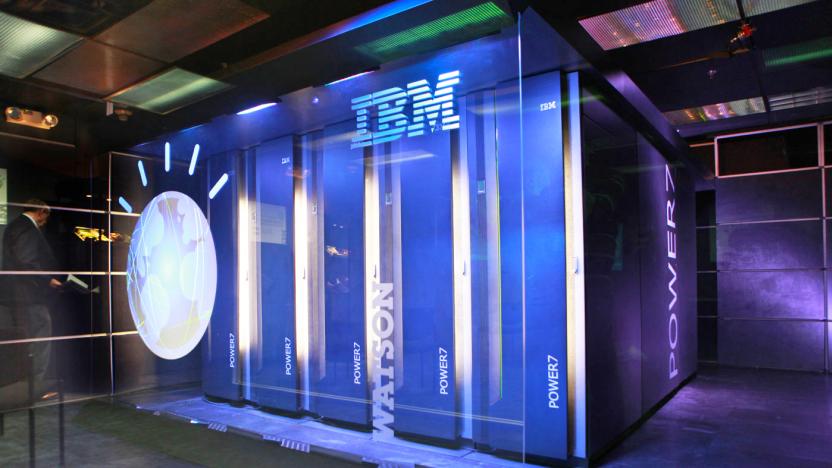biocomputers
Latest

The After Math: You take the good with the bad
It's been a week of mixed news for the tech industry. Boston Dynamics and MIT showed off new devices that could radically advance humanity while, at the same time, Sharp was acquired for billions by a company whose employees regularly throw themselves from its roof. Samsung showed off some massive new memory chips even as its lawyers continued their perpetual war with Apple. Worst of all, some genius gave Woody Allen money to make a new movie. Just, ugh.

Scientists built a book-sized, protein-powered biocomputer
Supercomputers are absurdly impressive in terms of raw power, but it comes at a price: size and energy consumption. A multi-university team of researchers might've sidestepped that, though, with protein-powered biocomputers. Lund University notes that where this should really be helpful is with cryptography and "mathematical optimization" because with each task it's necessary to test multiple solution sets. Unlike a traditional computer, biocomputers don't work in sequence, they operate in parallel -- leading to much faster problem solving.

Inhabitat's Week in Green: self-driving cars, solar parasols and the ultimate DIY Iron Man suit
Each week our friends at Inhabitat recap the week's most interesting green developments and clean tech news for us -- it's the Week in Green. What seems more futuristic: flying cars or self-driving cars? They both sound a bit like science fiction, but they're both getting closer to becoming a reality. In the latest chapter of Google's efforts to develop a car that uses video cameras, radar sensors and lasers to navigate through traffic, the state of Nevada just granted Google the world's first license for a computer-controlled, driverless Toyota Prius. Meanwhile, this week we also checked in on the PAL-V (which stands for "Personal Air and Land Vehicle"), a two-seat hybrid car and gyroplane that runs on gas, biodiesel or bio-ethanol. In other transportation news, the Texas Central Railroad floated a plan to build a $10-billion bullet train that would run between Houston and Fort Worth, and Toyota officially unveiled its second-generation 2012 RAV4 EV, which features a Tesla powertrain. We also saw green technology cropping up in unexpected places this week, like the $1-billion ghost town that will be built on virgin desert land in Lea County, New Mexico to test emerging green technologies. Construction on the ghost town is set to begin in late June. Milwaukee native Bryan Cera invented Glove One, a 3D-printed glove that doubles as a cell phone. And in Tokyo, participants heaved 100,000 LED lights into the Sumida River as part of the 2012 Tokyo Hotaru Festival. Although it certainly looked cool, that's a lot of LED bulbs to literally dump in the river, and it raises some questions about e-waste. GE found a more practical use for LEDs, unveiling a new LED light bulb to replace the 100-watt incandescent.

Harvard, Princeton researchers developing implantable "biocomputers"
Researchers at Harvard and Princeton have announced that they've made a "crucial step" in the development of so-called "biocomputers," which could one day be implanted in patients to directly attack diseased cells or tissues Fantastic Voyage-style. According to Physorg, the computers are actually constructed entirely out of DNA, RNA, and proteins, and are able to translate complex cellular signatures like the activities of multiple genes into a form that can be more readily observed. Currently, the researchers have demonstrated that the biocomputers can work in human kidney cells in culture, although they seem confident that they'll eventually find a wind range of uses, including working in conjunction with biosensors or medicine delivery systems to target, for instance, only cancerous or diseased cells, without causing any harm to the patient's healthy cells.


